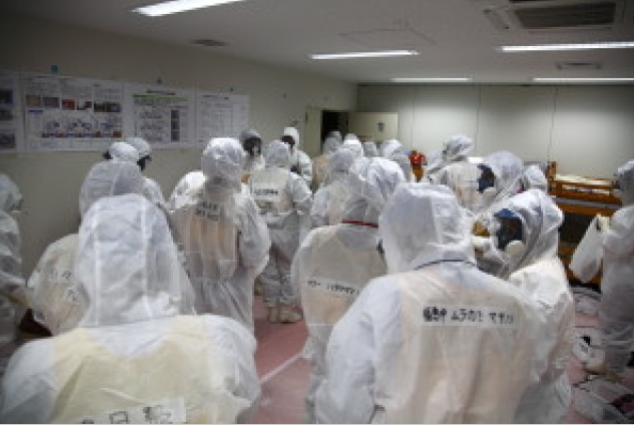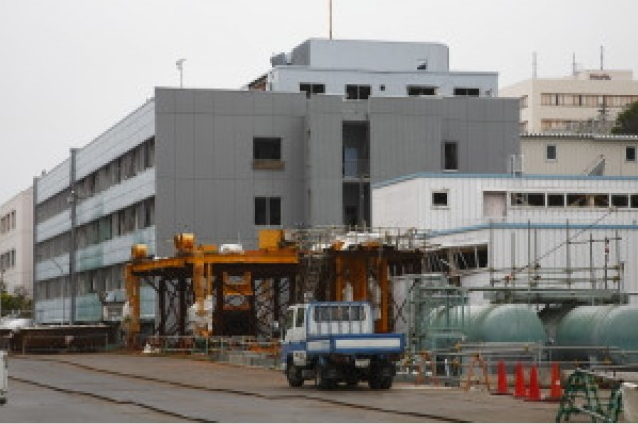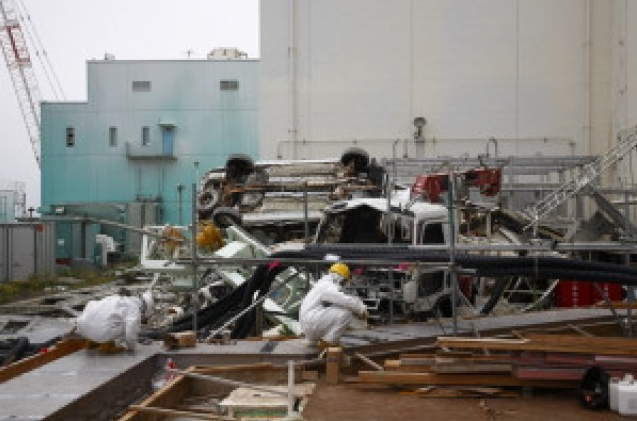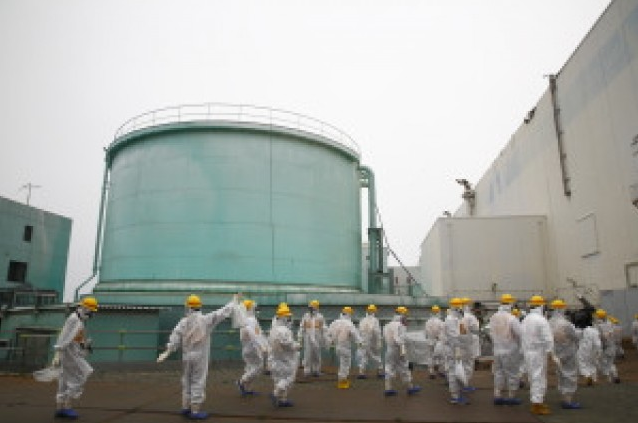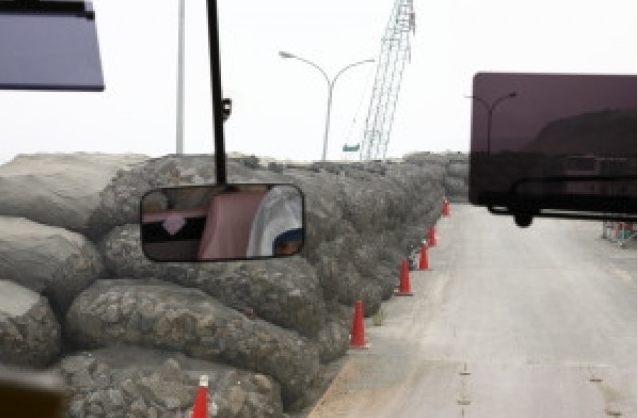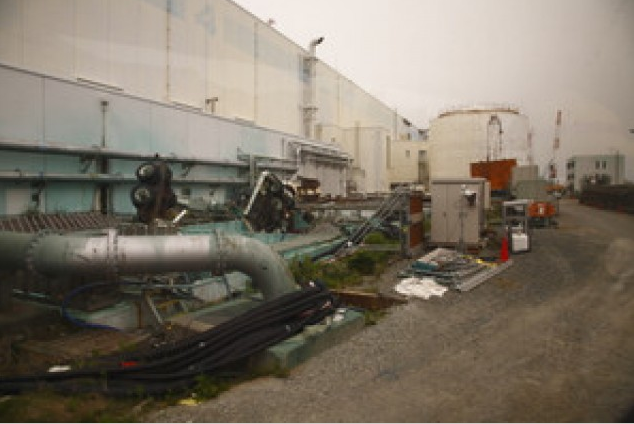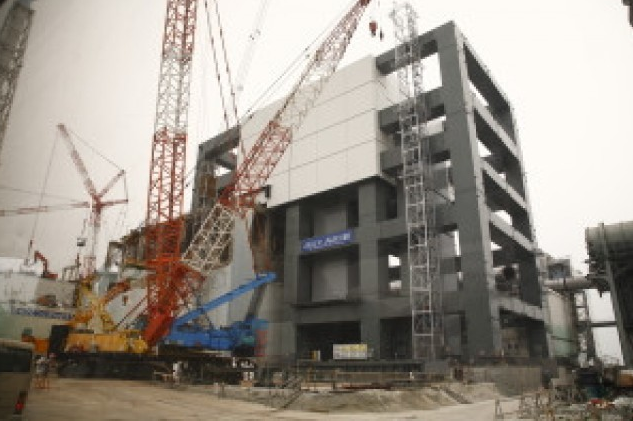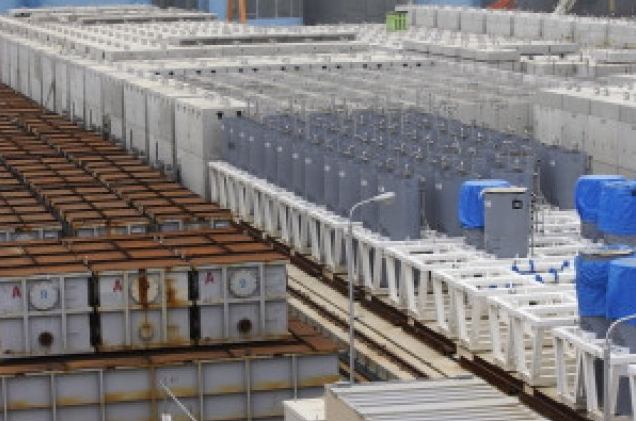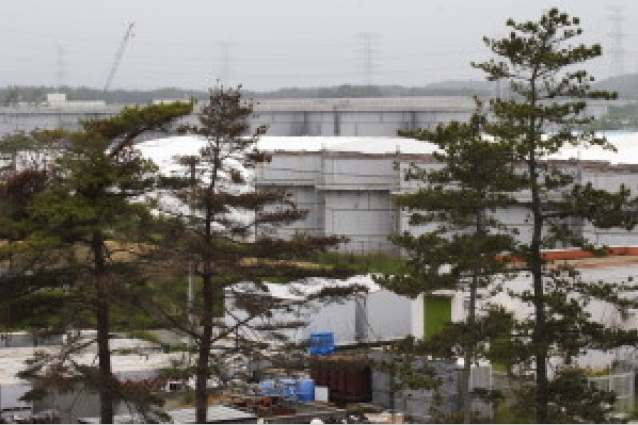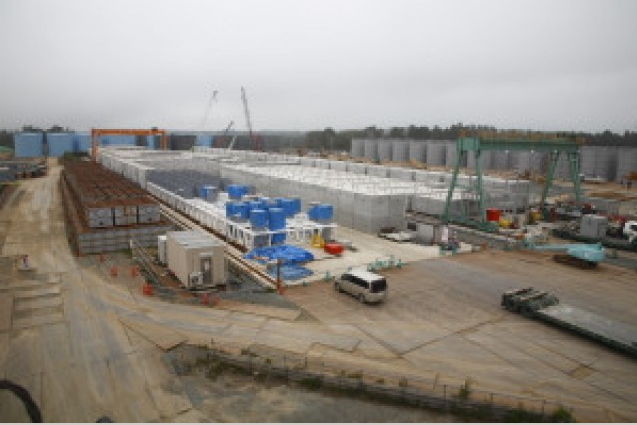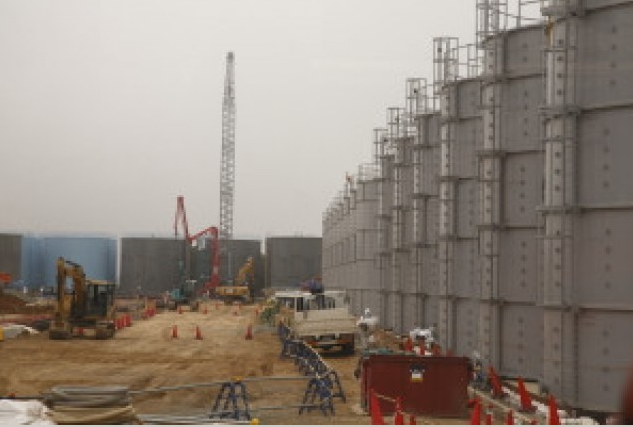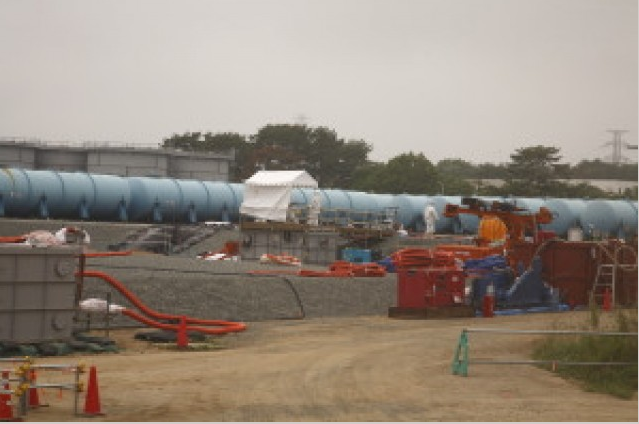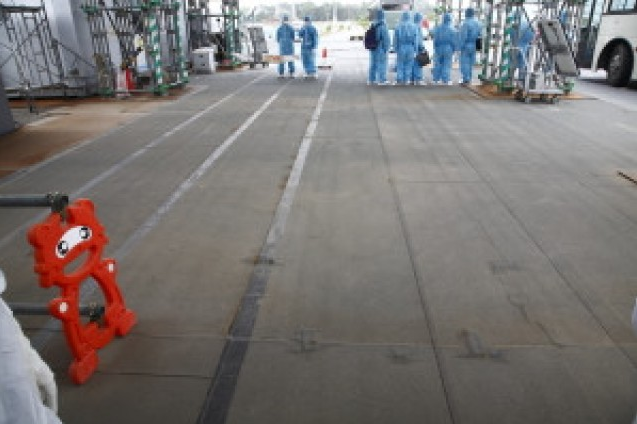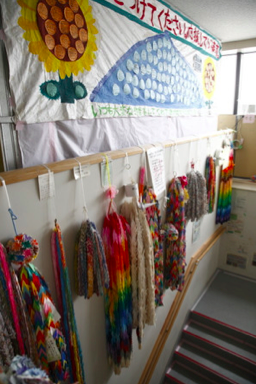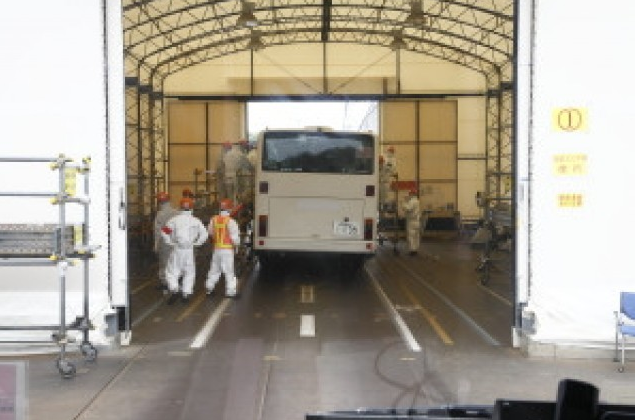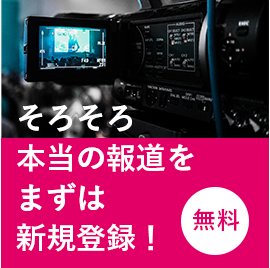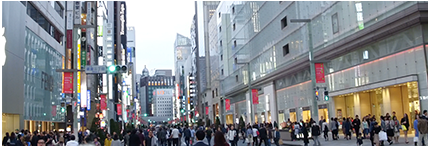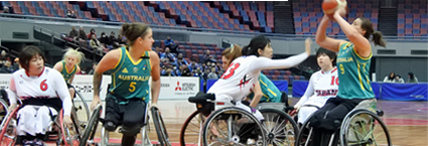New Pictures of Fukushima Daiichi Nuclear Power Station (June 2013) BY RYUICHI KINO
July 16, 2013
Ryuichi Kino was born in 1966. He became a freelance writer in 1995 after a carrier in production editing. He wrote the book “Kensho, Fukushima Genpatsu Jiko Kaiken, Toden/Seifu wa Nani wo Kakushita no ka (Iwanami Shoten)” (What Did TEPCO and the Government Conceal about the Fukushima Nuclear Accident?) Official Blog: “Kino Ryu ga Kaku”: http://kinoryu.cocolog-nifty.com/
*The Board says “Welcome to Fukushima Daiichi Nuclear Power Station, 1.5 Km Straight Ahead”
On June 11, 2013, an on-site media people tour of the Fukushima Daiichi Nuclear Power Station took place. As of yet, in February, May, September 2012, and in February 2013, five reporting tours have gathered journalists of different media corporations. It’s the fourth time that the group of freelance journalists participated. TEPCO also organizes reporting tours with the Press Club or special on-site reporting tours for major media corporations.
This was the third time I participated in the tour. It is the first time I was able to take pictures, because cameras were not allowed, so far (a camera representation didn’t exist before and at the second tour, a person who came along took pictures). The day of the reporting tour a dense fog made the giant cranes removing wreckages from the reactor building and the top of the exhaust pipe invisible.
My impression was that the plant site didn’t change much. Of course, the Kanaflex much softer PVC-made plumbing system through which contaminated water runs had been replaced with the solid polythene-made one. Also, the roadsides throughout the site have been cleared of debris. At reactor 4, a platform to help scoop spent nuclear fuel was erected, and the slumped walls couldn’t be seen anymore. Reactor 3 was also enclosed with the same kind of high structure, which kept the devastated building out of sight.
This is just the impression one would have, but under the cover and the platform reposed a crippled building hiding an unchanged and unfathomable nuclear reactor state of melted nuclear fuel. It can hardly be said that the plumbing system through which contaminated water runs is reliable. From the bus, the site of the nuclear plant bristling with storage tanks containing highly radioactive materials was not a pretty sight. At the side of the reactor facing the ocean were piled up nets of broken stones. This was what TEPCO called “temporary seawall”. With such a situation, concerns over the eventual occurrence of a quake or a tsunami of the scale of that of the Great East Japan are difficult to contain.
The actual condition of the Fukushima Daiichi Nuclear Power Station can be pictured only through the unreliable cameras of TEPCO and the JNN cameras which have been filming events from afar. It would be a pleasure to me if the following pictures slightly help face the ongoing situation of information breakdown.
1) A personal dosimeter with an alarm, also called APD. After the plant tour, at our return to J. Village, the total measurement showed zero on my dosimeter due to a battery loose contact. This wasn’t a rare happening as can be seen from the way TEPCO handles matters.
2) It took some time because a big group was changing clothes in a narrow meeting room… Am I the only one who felt that smaller groups would be more convenient?
3) The main office building ruined by the nuclear accident, the tsunami and the earthquake.
4) Workers busy building the water injection line at the sea side of the Fukushima Daiichi Nuclear Power Station’s reactor 1 turbine building. Tsunami-swept vehicles abandoned at the ocean side of the reactor.
5) CST storage tank at Reactor Unit 1.
6) A 4 meter-high temporary seawall. Nets of broken stones just piled up as can be seen. Can this stand a tsunami?
7) Reactor 4 turbine building from its ocean side. Abandoned overturned vehicles. Clean-up operations delayed particularly due to radiation.
8) A platform constructed closer to the reactor 4 building in order to scoop spent nuclear fuel. Cranes pull spent nuclear fuel from the pond.
9) Contaminated water storage equipment. Tubular vessels are decontamination filter cartridges used to remove radioactive cesium. In concrete boxes behind are preserved used cartridges. The boxes in front contain new cartridges.
10) As of July 2, 2013, a host of storage tanks contained 260,000 tons of radioactive polluted water. Hundreds of storage tanks of the capacity of 1000 tons and 500 tons are readied for use.
11) A Space for contaminated water storage tanks and radioactive cesium filtering cartridges in the inner south of the site. The grayish storage tanks at the right in back of the site were built in a rush after the leak accident of last April. These are movable tanks with a capacity of 500 tons each. On the left stand previously planned welded storage tanks. TEPCO has been increasing the number of welded tanks for safety reasons.
12) Workers scooping residual water after leakages from a ground water storage tank have been found last April. Under the slightly high surface in front lies the ground water storage pond. The blue tanks behind are used to store contaminated water.
13) A TEPCO worker gives explanations about contaminated water storage tanks. At the extreme right stand contaminated water storage tanks made in a rush after ground water storage tank leaks.
14) Just in front gray storage tanks made in a rush after the groundwater storage tank leakages occurred. Farther are welded storage tanks.
15) Miscellaneous equipment to store contaminated water. On the right side are metallic reservoirs. The blue storage tanks were installed just after the accident. Under the slightly high space lies the groundwater storage pond.
16) Due to high radiation levels in the northern side of reactor 3, the tour had to be done on the bus. The building was almost invisible since it was shielded, but one could notice that wreckages from the 4th and 5th floors after the explosion have been removed.
17) At the entrance of the Main Anti-Earthquake Building where the management of the Fukushima Daiichi Nuclear Power Plant is controlled, radiation levels were high even after decontamination. Shields against radiation can be seen.
18) Origami crane strings and colored papers hung on the walls inside the Main Anti-Earthquake Building. During my visit a year ago, these ornaments were in the same place.
19) Radiation checking at the exit of the nuclear plant site. A bus with more than 10 riders receives radiation check. The other day radioactivity was found to be high here, but the driver didn’t bother and got off.
[Excerpt from the blog “kino ryuichi no blog”]
(Translated from Japanese by Willy Lukebana Toko)




